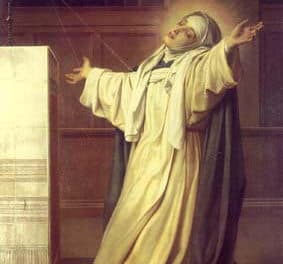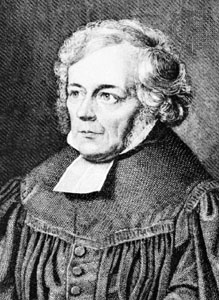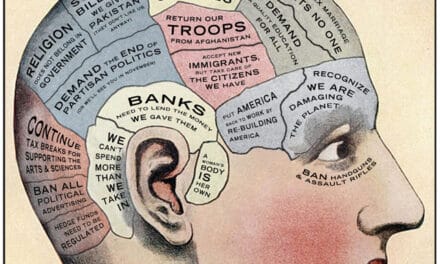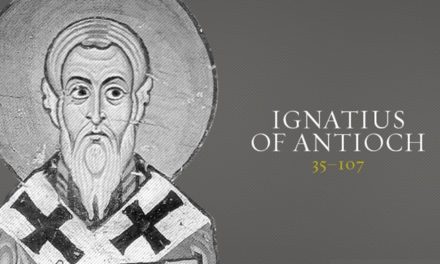This episode of CS is titled Results.
Now that we’ve taken a look at some of the movements and luminaries of the Renaissance, Reformation, and Enlightenment, it’s time for a review of the results and their impact on The Church.
Once we embark in the next Era of Church History, we’ll find ourselves in the weeds of so many movements we’re going to have to back up and take it in an even more summary form than we have. Turns out, the warning Roman Catholics sounded when Protestants split off turned out to be true. They warned if Luther and other Reformers left the Mother Church, they’d commence a fragmenting that would never end. They foretold that anyone with their own idea of the way things ought to be would run off to start their own group, that would become another church, then a movement of churches and eventually a denomination. The hundreds of denominations and tens of thousands of independent churches today are testimony to that fragmenting.
The problem for us here with CS is this – There’s no way we can chronicle all the many directions the Church went in that fragmenting. We’ll need to stand back to only mark the broad strokes.
Though the Enlightenment heavyweight John Locke was an active advocate of religious tolerance, he made it clear tolerance didn’t apply to Catholics. The fear in England of a Catholic-Jacobite conspiracy, valid it turned out, moved Locke and the Anglican clergy to be wary of granting Catholics the full spectrum of civil rights. On the contrary, the English were at one point so paranoid of Rome’s attempt to seize the throne, a 1699 statute made the saying of a Latin mass a crime.
Many Roman Church apologists were talented writers and challenged Anglican teachings. In 1665, Bishop Tillotson answered John Sergeant’s treatise titled Sure Footing in Christianity, or Rational Discourses on the Rule of Faith. Sergeant worried some Protestants might convert to Catholicism for political reasons. His anxiety grew in 1685 when the Roman Catholic Duke of York, James II, became king. King James’s Declaration of Indulgences removed restrictions blocking Catholics from serving in the government.
The arrival of William III and the Glorious Revolution ended James’ efforts to return England to the Catholic fold. He was allowed to leave England for France at the end of 1688. Then in 1714, with the Peace of Utrecht ending the War of the Spanish Succession, France’s King Louis XIV, promised he’d no longer back the Stuart claim to England’s throne.
During the 18th C, Catholics in England were a minority. At the dawn of the century, there were only two convents in England, with a whopping 25 nuns. By 1770, the number of Catholics still only numbered some 80,000. They lacked civil and political rights and were considered social outsiders. The Marriage Act of 1753 disallowed any wedding not conducted according to the Anglican rite, excepting Quakers and Jews.
This is not to say all English Protestants were intolerant of Roman Catholics. Some of the upper classes appreciated varied aspects of Roman culture. They owned art produced by Catholic artists and thought making the continental Grand Tour a vital part of proper education. One of the chief stops on that Tour was, of course, Rome.
Still, anti-Catholic feelings on the part of the common people were seen in the Gordon Riots of 1780. When the 1699 statute banning the Mass was removed, a mob burned down Catholic homes and churches. Catholics didn’t receive full civil liberty until the Emancipation Act of 1829.
While Anglicans, Baptists, and Catholics sniped at each other, they all agreed Deism represented a serious threat to the Christian Faith. England proved to be Deism’s most fertile soil.
In 1645, Lord Herbert of Cherbury, Father of English Deism, proposed five articles as the basis of his rationalist religion.
1) God exists;
2) We are obliged to revere God;
3) Worship consists of a practical morality;
4) We should repent of sin;
5) A future divine judgment awaits all people based on how they’ve lived.
Charles Blount published several works that furthered the Deist cause in England. John Toland’s Christianity not Mysterious in 1696 opened the floodgates of Deistic literature. Contemporaries of John Locke viewed his The Reasonableness of Christianity as preparing the way for Toland’s explicitly Deist work. Locke tried to blunt the accusation by saying while Toland was a friend, his ideas were his own and had no connection to his own.
The first half of the 18th C saw an onslaught of literature from Deists that seemed to batter Anglicans into a corner and make the Gospel seem insipid. So much so that in 1722 Daniel Defoe complained that “no age, since the founding and forming the Christian Church was ever like, in openly avowed atheism, blasphemies, and heresies, to the age we now live in.” When Montesquieu visited England in 1729 he wrote “There is no religion, and the subject if mentioned, excites nothing but laughter.” The Baron certainly over-stated the case since other evidence indicates religious discussion was far from rare. But in his circle of contacts, the place theological discussion had once played was now greatly diminished.
Eventually, in response to this wave of Deist literature, Christian apologists embarked on a campaign to address a number of -isms that had risen to silence the Faith. They dealt with Deism, Atheism, a resurgent Arianism, Socinianism, and Unitarianism. Their task was complicated by the fact many of their Deist opponents claimed to be proponents of the “true” teachings of the Christian faith.
Richard Bentley observed that the claims of Deists attacked the very heart of the Christian faith. He summarized Deist ideas like this – “They say that the soul is material, Christianity a cheat, Scripture a falsehood, hell a fable, heaven a dream, our life without providence, and our death without hope, such are the items of the glorious gospel of these Deist evangelists.”
A number of Deists argued that God, Who they referred to as the Architect of the Universe, does not providentially involve Himself in His creation. Rather, He established fixed laws to govern the way the world runs. Since the laws are fixed, no biblical miracles could have taken place. So, the Bible is filled with errors and nonsense, a premise deists like Anthony Collins claimed was confirmed by critics like Spinoza. Prophetic pointers to a Messiah in the Old Testament could not have been fulfilled by Christ since prophecy would violate the fixed law of time.
Deists maintained that salvation is NOT an issue of believing the Gospel. Rather, God requires all peoples to follow rationally construed moral laws regarding what’s right and wrong. Since a measure of reason is given to everyone, God is fair, they contended, in holding everyone accountable to the same rational, moral standards.
The astute listener may note that that sounds close to what some scientists advocate today. We hear much about the growing number of once atheist scientists coming to a faith in God. That report is true, but we need to qualify the “god” many of them are coming to faith in. It’s a god of the small ‘g’, not a capital “G” as in the God of the Bible. The god of many recent scientist converts is more akin to the Watchmaker deity of the Deists than the God of Abraham, Isaac, Jacob, and The Apostle Paul.
Deists believed what they called “natural religion” underlying all religion. We learn of this religion, not from the special revelation of Scripture. We learn it from, as Immanuel Kant would say “the starry heavens above, and the moral law within.”
Christian apologists unleashed scores of books in an anti-deist counterattack. One of the most effective was Jacques Abbadie’s Treatise on the Truth of the Christian Religion. Published in 1684, it was one of the earliest and most widely circulated apologetics for the truthfulness of the Christian faith based on “facts.” Abbadie was a Protestant pastor in London. He countered Deist arguments against the resurrection and alleged discrepancies in Scripture. The points he made remain some of the most potent apologetics today. He pointed out the public nature of Christ’s appearances after the resurrection. The change in the disciples’ attitudes, from trembling in fear to confidence in the truthfulness and power of The Gospel as evidenced by their preaching and willingness to die for the Faith. In the 18th C, Abbadie’s work was found in the libraries of more French nobles than the best-selling works of Bossuet or Pascal.
You may remember a couple of episodes back, our brief coverage of the work of the skeptic David Hume. Hume attacked the concept of “cause and effect,” claiming it was only an unsubstantiated presupposition allowing for it that made cause and effect a rule. Hume’s criticism turned those who bought his ideas into inveterate critics unable to come to conclusions about anything. John Wesley described Hume as “the most insolent despiser of truth and virtue that ever appeared in the world, an avowed enemy to God and man, and to all that is sacred and valuable upon earth.”
The Scottish philosopher Thomas Reid developed an erudite response to Hume’s skepticism. In his An Essay on Inquiry into the Human Mind on the Principles of Common Sense, published in 1764, Reid critiqued Hume’s theory: “The theory of ideas, like the Trojan horse, had a specious appearance both of innocence and beauty; but if those philosophers had known, that it carried in its belly death and destruction to all science and common sense, they would not have broken down their walls to give it admittance.” Hume’s principles, Reid showed, led to absurd conclusions.
While Skepticism and Deism gained many adherents early on, and Christianity struggled for a while as it adjusted to the new challenge, it eventually produced a plethora of responses that regained a good measure of the intellectual ground. This period can be said to be the breeding ground for today’s apologetic culture and the core of its philosophical stream.
In 1790, Edmund Burke rejoiced that Christian apologists had largely won out over the Deists.
At the dawning of the 18th C, the Scottish clans with their rough and tumble culture and the warlike tradition continued to reign over a good part of the Scottish Highlands, which accounts for about a third of the total area. In contrast, the capital of Edinburgh was a small city of no more than 35,000 crowded into dirty tenements, stacked one above another.
By the Act of Union of 1707, Scotland and England became one. The Scottish Parliament was dissolved and merged with the English. Scots were given 45 members in the House of Commons. But tension remained between north and south.
In the Patronage Act of 1712, the English Crown claimed the right to choose Scottish pastors; an apparent end-run by the Anglican Church of England around the rights of Presbyterian Scotland. Seceder Presbyterians refused to honor the pastors appointed by England. They started their own independent churches.
Then, in 1742 the Cambuslang Revival swept Scotland. For four months, the church in Cambuslang, a few miles from Glasgow, witnessed large numbers of people attending prayer meetings and showing great fervency in their devotion to God. In June, George Whitefield visited and preached several times. In August, meetings saw as many as 40,000. The pastor of the church wrote, “People sat unwearied till two in the morning to hear sermons, disregarding the weather. You could scarcely walk a yard, but you must tread upon some, either rejoicing in God for mercies received, or crying out for more. Thousands and thousands have I seen, melted down under the word and power of God.”
Whitefield then preached to large crowds in Edinburgh and other cities. Other centers of revival popped up.
In the second half of the 18th C, Scotland gained a reputation as a center for the Enlightenment under such men as David Hume, Thomas Reid, Adam Smith, and Francis Hutchison. Voltaire wrote that “today it is from Scotland that we get rules of taste in all the arts, from epic poetry to gardening.”
An interesting development took place in Scotland at that time, maybe born by a weariness of the internecine conflict endemic to Scottish history. A cultured “literati” in Edinburgh participated in different clubs, but all aimed at striking some kind of balance where people of different persuasions could hold discourse without feeling the need to come to blows. They sought enlightened ways to improve society and agriculture. In the inaugural edition of the Edinburgh Review, 1755, the editor encouraged Scots “to a more eager pursuit of learning themselves, and to do honor to their country.”
Evangelicals like Edinburgh pastors John Erskine and Robert Walker hoped to reform society using some of the new ideas of Enlightenment thinkers. They embarked on a campaign to safeguard and expand civil liberties. But unlike more moderate members of the Church of Scotland, they believed conversion to personal faith in Christ was a prerequisite for reform. Erskine appreciated George Whitefield and edited and published a number of Jonathan Edwards’ works.
In Ireland, the Glorious Revolution was not at all “glorious” for Catholics. On July 1, 1690, the armies of the Protestant King William III defeated the forces of the Catholic James II at the Battle of the Boyne and seized Dublin. In 1691, Jacobites in Ireland either fled or surrendered. The Banishment Act of 1697 ordered all Catholic clergy to leave Ireland or risk execution. Poverty and illiteracy made life miserable for large numbers of Irish Catholics.
English restrictions on Ireland were brutal. Power resided in the hands of a small group of wealthy Anglican elite of the official Church of Ireland. Even Scottish Presbyterians who had settled in Ulster were excluded from civil and military roles. And the Irish had to pay the cost of quartering English troops to keep the peace.
Not to be denied, some Catholic priests donned secular clothes so as to continue to minister to their spiritual charges without putting them in danger.
In the last decades of the 18th Century the Irish population grew rapidly. Methodists numbered some 14,000 in 1790 and allied with other Protestants who’d come over from England, settled the north of the Island. Protestants in Ireland, whatever their stripe, typically held fierce anti-Catholic sentiments, just as Catholics were hostile toward Protestants.
In 1778 the Catholic Relief Act allowed Catholics to buy and inherit land. In 1782 the Irish Parliament gained independence, and laws against Catholics were changed. But the English monarchy managed to maintain its authority and put down the Irish Rebellion of 1798.
The upshot is this à The Gospel faced a withering barrage from some of the most potent of Enlightenment critics, skeptics, and foes. The Church was slow to respond, which allowed the ideas of rationalism to poison the well of much Western philosophical thought. The challenge was eventually answered, not only with an eloquent reply but by the stirring of the Holy Spirit Who brought winds of revival for which the most elite skeptic had no comeback.
Christianity was tested in the British Isles during the 18th C, but it passed the test.






When you talked about Deism, are these the beliefs of the American Founding Fathers? If so, it does not sound like orthodox Christianity or as usually portrayed just a harmless belief in a divine clockmaker.
Keith,
A few of the Founders were Deists as Deism was a fadish but minor philosophy during that era of English history.
It’s said Franklin was a Deist; but several of his comments seem to belie a belief in the deity of Deism.
He implored the Constitutional Convention to hold daily prayer meetings asking God to help them in their task.
Help is not what the Divine Watchmaker god of Deism would provide since he doesn’t intervene and miracles aren’t possible in Deism.
But there were only a handful of Deists among the larger group of Founders.
To your larger question, yes Deism was dangerous. As I mentioned int he podcast, The Church didn’t do a good job of answering it’s early challenge, so some were seduced by it. But once theologians began dismantling it, it quickly lost ground. That’s why there are no real Deists today. It can’t stand up against a reasoned & articulate Faith founded on God’s Word & a sound philosophical methodology.